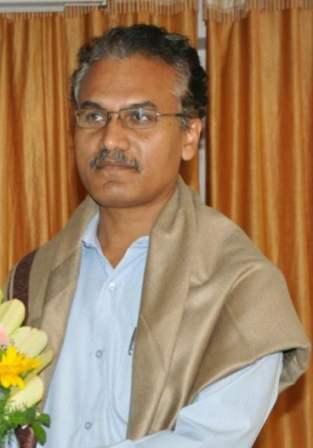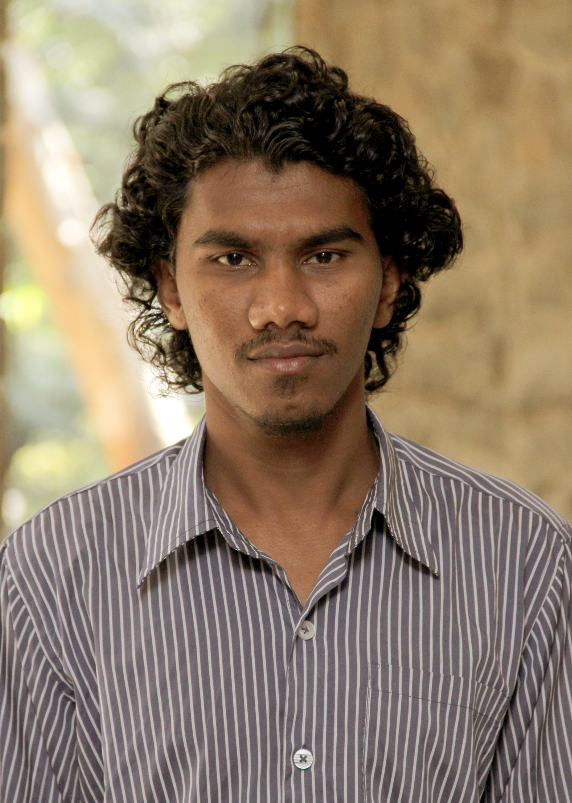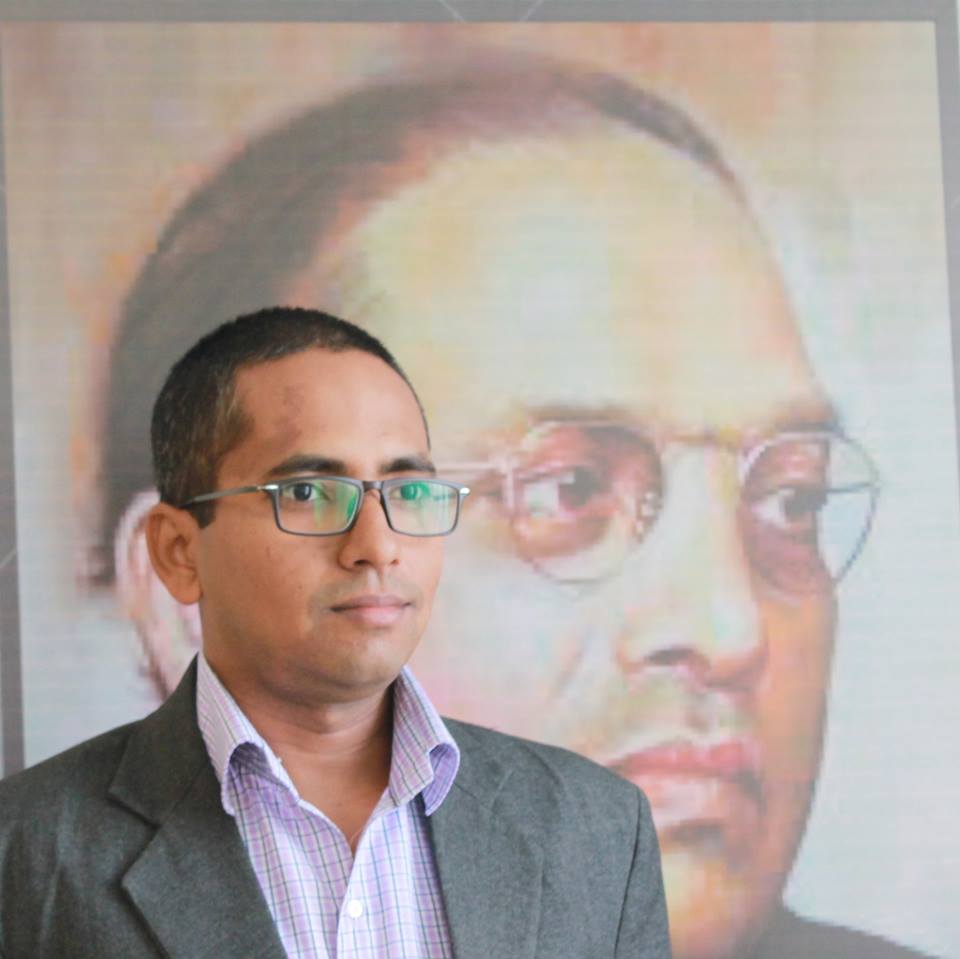Dr. Narayan Bhosale
 People from nomadic communities did not understand the precise meaning of this lockdown during the period of pandemic. If they did, it was already late; if it wasn’t too late, then they were frustrated due to the helpless state it put them in. Nomadic communities have been stranded on the streets in various states, near petrol pumps, playgrounds, and public spaces after the announcement and implementation of the ongoing lockdown.
People from nomadic communities did not understand the precise meaning of this lockdown during the period of pandemic. If they did, it was already late; if it wasn’t too late, then they were frustrated due to the helpless state it put them in. Nomadic communities have been stranded on the streets in various states, near petrol pumps, playgrounds, and public spaces after the announcement and implementation of the ongoing lockdown.
In India, the number of labourers and families migrating in the search of work is alarmingly high. The Economic Survey report shows that around nine million workers migrate from one state to another and five million workers migrate within the state every year. Population of people belonging to nomadic tribes in Maharashtra is 1 crore. Of this 1 crore, half migrate for work. Similarly, according to government reports, half of the total 15 crore Nomadic people in India migrate for work. These migrants have been travelling in order to cater to their most basic necessities–of food, clothing, shelter, and gainful employment. Some of these people from Nomadic tribes are seen to be employed in temporary situations, offering various services in the higher classes’ settlements. Nomadic tribes’ settlements are reduced to being labor providing hubs for the urban populations.
Communities that are most vulnerable to various epidemics are always the only ones left without any relief. That is why it is especially important to provide support to the unsupported communities at the time of such an epidemic. Such Nomadic communities and communities like theirs are trapped in different states during the lockdown necessitated by this pandemic. Before the lockdown was implemented, on March 15, Lakshman Gyanoba Bhosale died at his birhad (temporary camp of Nomadic people) in the premises of the Gadda ground at Solapur. On March 16, his body was brought to Bamani by ambulance, and his relatives came from across the country for his funeral. After the burial, they were trapped there as the trains had stopped running by the time they could return. The relatives who were beggars had left their birhads open in various provinces and now they were trapped far away. In the absence of working members of the family, other family members including women and children left behind at their respective birhads were cluelessly waiting for them. Similar incidents have happened all over India.
Homeowners and owners of bungalows have arrived home from wherever they were, and are staying safely in their own buildings and luxurious apartments during the lockdown. Various modes of transport have been made available to them, often with the help of the Government. The Government arranged special flights and trains for them. News and announcements by the government reached them in a timely manner. This is alright. But what about those who did not understand the precise meaning of this lockdown at the time of this pandemic? Even if they got its meaning it was too late. Even if some of them understood it in time, they were frustrated due to their helplessness.
Nomadic communities have been stranded on the streets in various states, near petrol pumps, playgrounds, public spaces after the announcement and implementation of lockdown. They are running here and there cluelessly. The workers too did not get time to demand wages for their labor. They started running towards safe places but all their avenues have dried up. A handful of these nomads might have received something resembling nutrition a few times at best, but those who have not received anything, which is to say most of them throughout India, are eagerly awaiting your help. They are wailing, wondering where the nest that they had painstakingly built on a broken tree-branch has gone. Can anyone hear these cries of agony?
Many nomadic people also work as sugarcane cutters are stranded in sugarcane fields across regions and states. Many are also working as road and building construction laborers. In the period of corona, there is not much difference between the situation of the nomadic labourers and the nomadic beggars; both are suffering. A nomadic tribe, Nathpanthi Dawari Gosavi is one such begging community from Maharashtra. More than half of the four to five million population of this community is stranded in different states.
Even within Maharashtra they are stranded in various far-flung districts, talukas and villages. A joint family consists generally of eight to ten people, including children and the elderly. Even if two or three families are stuck in one place, it becomes twenty-five people. They are trapped in city slums in filthy conditions. That is why, by and large, no relief has reached them so far. When I tried to contact them, they could not even tell me exactly what kind of help they needed. All that these people could do was vent out their rage!
Some families from Bamani village, Sangola taluka of Solapur district had migrated to Rajasthan to fill their bellies. From there they went to Surajgarh in Rajasthan. Later, on the way to Gurgaon-Delhi by truck, they were caught by the dutiful government officials and were kept near a petrol pump there. There were a total of 81 people including 16 men, 25 women and the rest, young children. Though these people from Bamani, Malshiras, Ganeshwadi, Mohol and so on, are nomadic, they are humans too. Some of their families are in Rajasthan, some in Delhi, some in Maharashtra and some in Marwad Pali. Their breath is trapped in their throats, waiting for a release. They are frightened, they are frustrated. No one paid any attention to them for the first few days. Those poor souls… Their hearts are filled with despair. For the first few days, nobody paid them any attention. Their eyes were swollen and tired from sobbing. They had no way of knowing how in the world all of this had happened. Finally, the administration took appropriate steps and provided two meals for them at the same place. They have not yet been tested for corona, or anything else.
One such birhad of four or five families is stuck near the Samud Nira village of Purandar taluka. Two days ago, it rained heavily , and their tents were flooded with water up to their thighs. There was no help for a while, but few youths from the family, in anticipation of help, made a video of it and put it on social media. These nomadic families in Nira are waiting for help, at least for some food, and their hopes are pinned on the video.
Media never covers such stories of Nomadic people from UP, Bihar, Punjab, Rajasthan, Orissa, Karnataka, Goa. I’ve talked to a few of these families over the phone.
No one gives them shelter in the village, no one allows them to enter the village, the ration shop owners don’t provide grains on immediate basis; villages have closed their doors to these nomadic people. In some villages, a few empathetic officers have arranged food for them twice a day.
It is impossible for wanderers to wash their hands frequently, to stay in their homes indefinitely, to check into the hospital if they have symptoms of corona, to not have contact with each other. These nomadic people are afraid of such epidemics- they should have always had support from society, there should have already been efforts towards building health literacy among them. The government has complete knowledge of such communities who don’t have support. There are various sociological studies on these communities, carried of by numerous organizations, which are just lying there uselessly, gathering dust. In such studies, many schemes and solutions have been suggested for bringing stability to these wanderers’ lives. But because every single one of them has always lacked empathy and sensitivity, our wandering birds have just gone on and on, wandering and straying endlessly.
Their rehabilitation was required at all levels. If no one supports these nomadic people, such diseases cannot be prevented from spreading.Taking care of the welfare of only the middle class and upper castes, leaving such a nomadic community to the wind, will only lead to the disease spreading like wildfire. Where did the money meant for developing an unsupported community go? Even though they know the answer to such a frequently asked question, no one will ever speak it!
Originally published in Marathi on 5th April in Divya Marathi. Translated by Arati Kade, PhD scholar TISS Mumbai.
~~~
Dr. Narayan Bhosale is Assistant Professor, Department of History, in Mumbai University.










